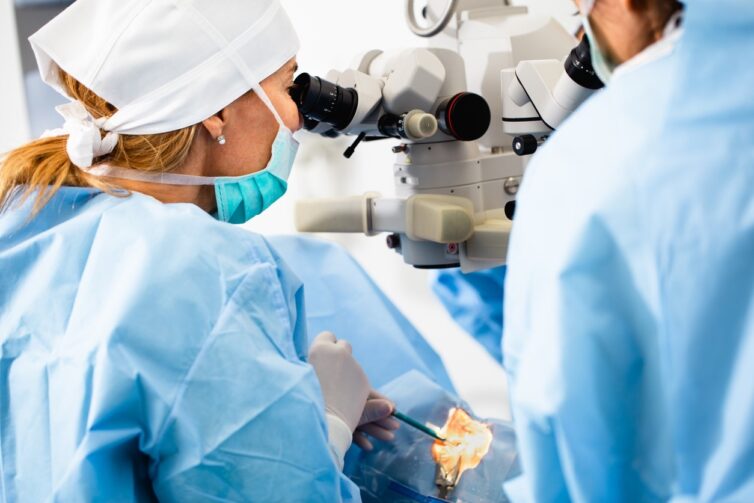About four million Americans undergo cataract surgery annually, and about 28 million globally. On a parallel track, close to 30 million Americans suffer from some form of Dry Eye Disease (DED). Both diseases are age related.
In addition, it is becoming clear that cataract surgery can either trigger or exacerbate Dry Eye symptoms. So, even when Dry Eye is not caused by cataract surgery, ophthalmologists now recognize it as one complication associated with it. If you are concerned about cataract surgery and dry eye disease, talk about it with your ophthalmologist.
Can Cataract Surgery Cause Dry Eye Disease?
Generally, evidence suggests that DED and Meibomian Gland Dysfunction (MGD) are not caused by the surgery itself. Rather, post-operative issues have been found to arise in many cataract surgery patients. Because numerous patients do not exhibit dry symptoms prior to the procedure, they may assume they do not have MGD or dry eye disease. Then, DED symptoms can manifest after cataract surgery. In fact, according to an article in Ophthalmology Times, more than 87 percent of patients require artificial tears after having cataract surgery.
Additionally, those who undergo laser-assisted cataract surgery seem to be at an even higher risk of dry eye symptoms after surgery.
Most critically, to maximize optimal patient outcomes from cataract surgery, pre-treating the ocular surface for Dry Eye and other conditions will improve the measurement of the needed correction.
“The bottom line is that the latest refractive cataract tools and techniques will only go so far in providing good outcomes. Without a pristine, well-maintained ocular surface, patients simply will not see well postoperatively, regardless of whether the surgeon meets his or her refractive target. Therefore, it is crucial that surgeons add ocular surface preparation to their lineup of preoperative steps.”
~Elizabeth Yeu, MD; Helio.com
Achieving that pristine ocular surface most often requires diagnosis and pre-operative treatment of Dry Eye.
The Importance of Pre-Operative Diagnostic Testing Before Cataract Surgery
In combination with the need to prepare a patient’s eye for surgery, many post-op patients suffer from dry eye symptoms. So, ophthalmologists are actively exploring how to improve patient outcomes. Once again this recommends pre-op diagnostics. Since the symptoms are often not apparent until after the procedure, ophthalmologists who perform diagnostic tests before scheduling surgery will prescribe both pre and post-operative courses of treatment. This testing can help to detect conditions that may be present but are not yet obvious to the patient. By identifying problems such as tear film instability, an eye doctor may aid in a smoother post-operative transition for cataract patients.
The Key Role of Dry Eye Management
Once the doctor identifies DED (whether before or after cataract surgery), a course of treatment occurs to avoid much preventable suffering. Fortunately, although dry eye disease is a chronic disease without a cure, there are various ways to manage its symptoms.
Your ophthalmologist may recommend a specific protocol to combat your DED. Those with dry eye symptoms should certainly adopt an eyelid hygiene routine as soon as possible. If you are one of the 85% of Dry Eye sufferers who has MGD, daily heat sessions applied using an eye mask should be part of that routine. If you are asymptomatic but have still been diagnosed with dry eye, employing a regular home treatment routine now may also spare you from DED getting worse.
How to Obtain Dry Eye Relief for Cataract Patients
As noted above, applying warm heat with an eye mask is one of the primary ways to manage dry eye disease caused by meibomian gland dysfunction. If you are planning cataract surgery, be sure to discuss this type of treatment with your eye doctor. EyeGiene warm eye compresses are safe, effective, easy to use and affordable, making EyeGiene Insta-Warmth treatments for dry eye a leading home treatment among dry eye sufferers.
Call us at 1.888.882.1978 if you have questions, or feel free to contact us online today.
To shop for EyeGiene Dry Eye treatments, visit shop.eyegiene.com. First-time customers may use STARTER15 at checkout to get a 15% discount on our Insta-Warmth system starter kit, which comes with a mask and ten Warming Wafer packets.


